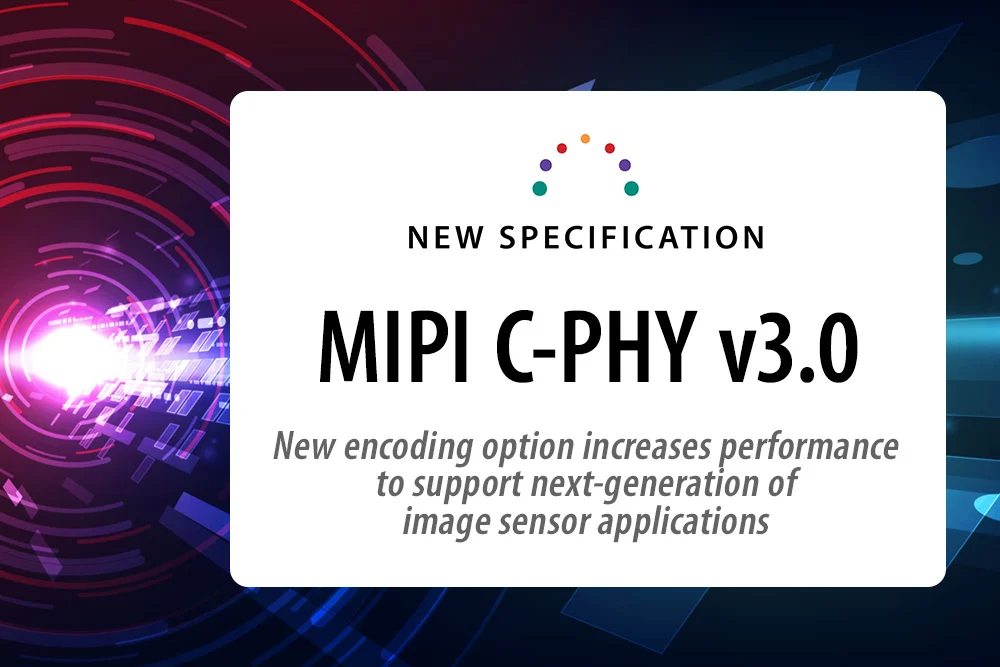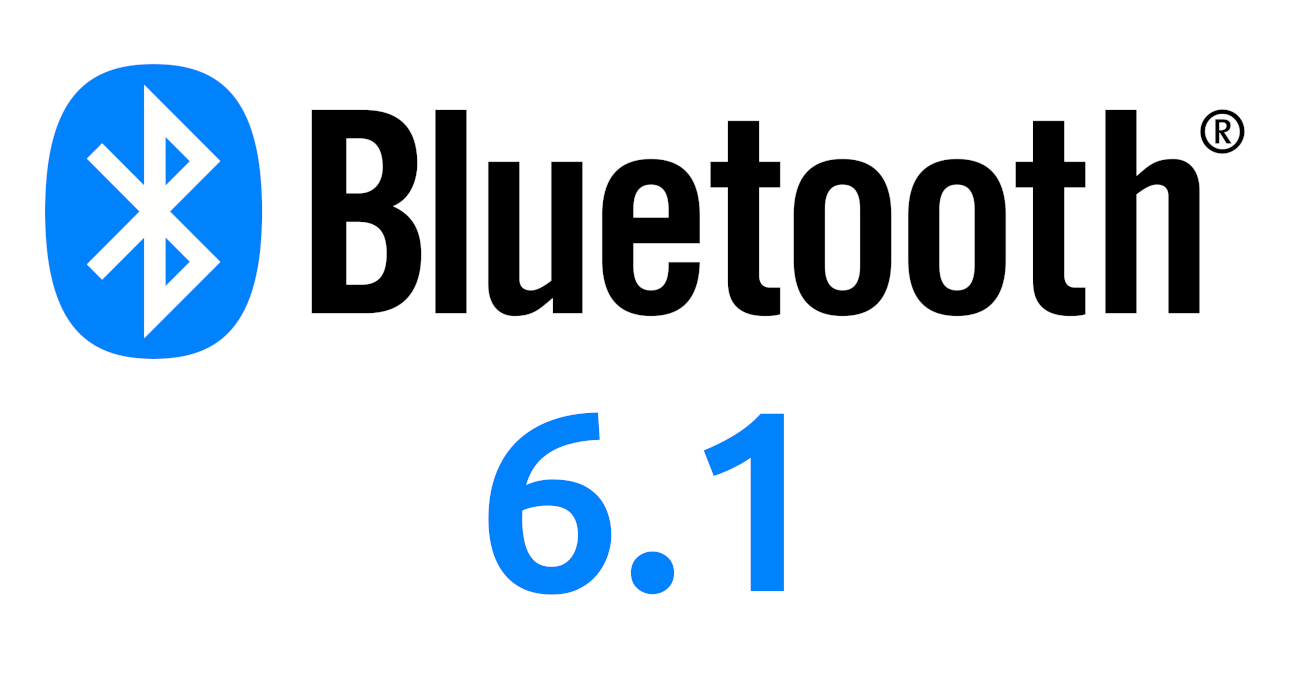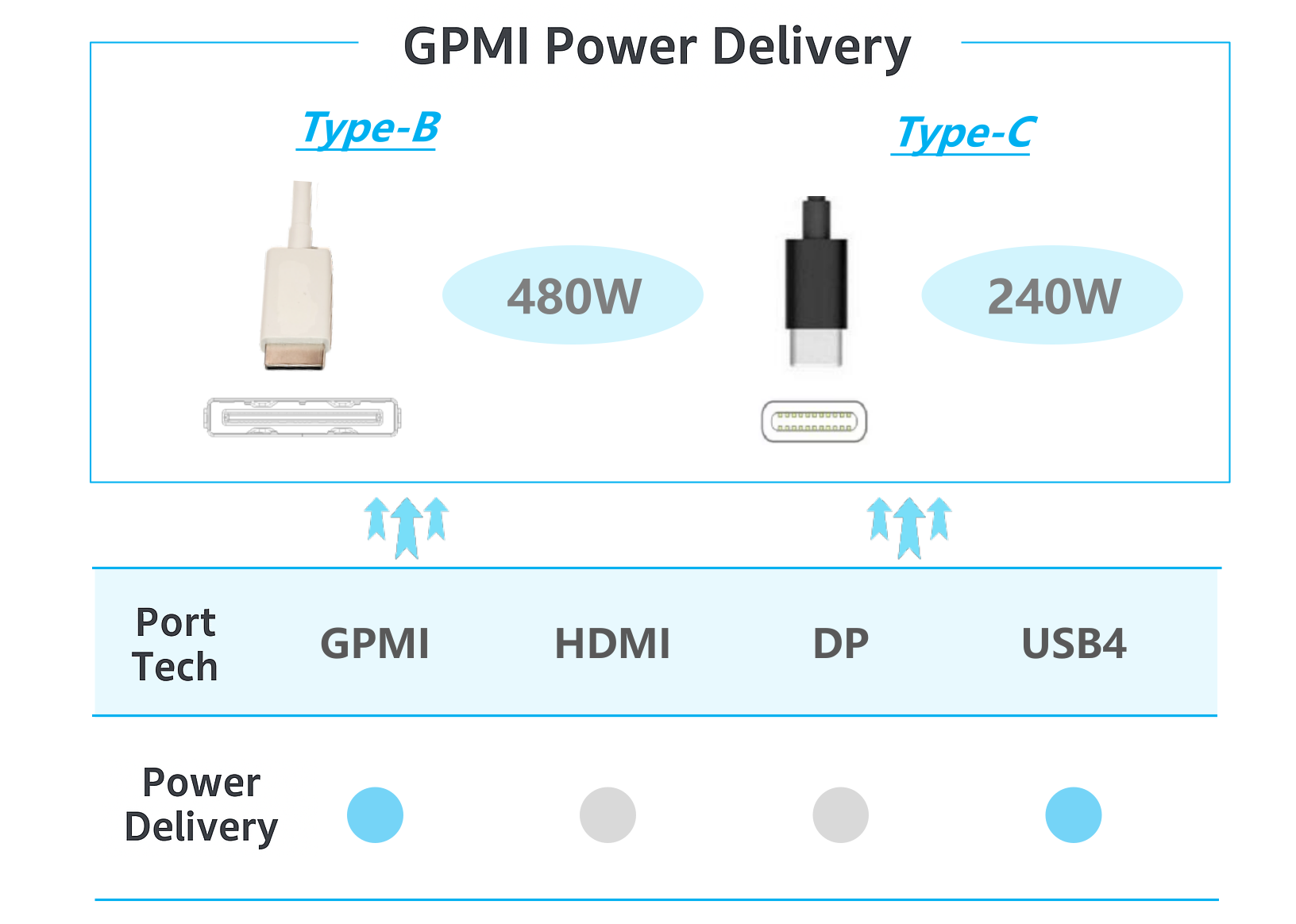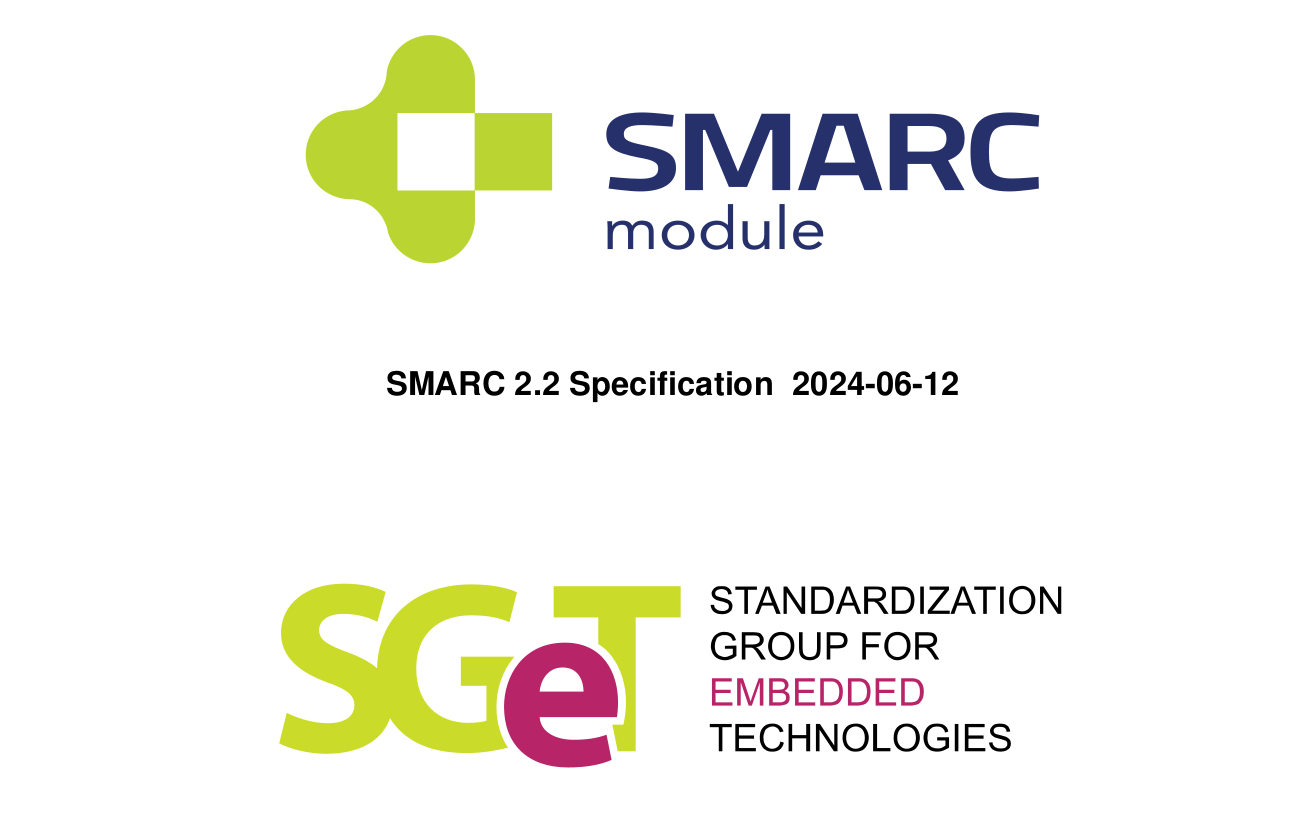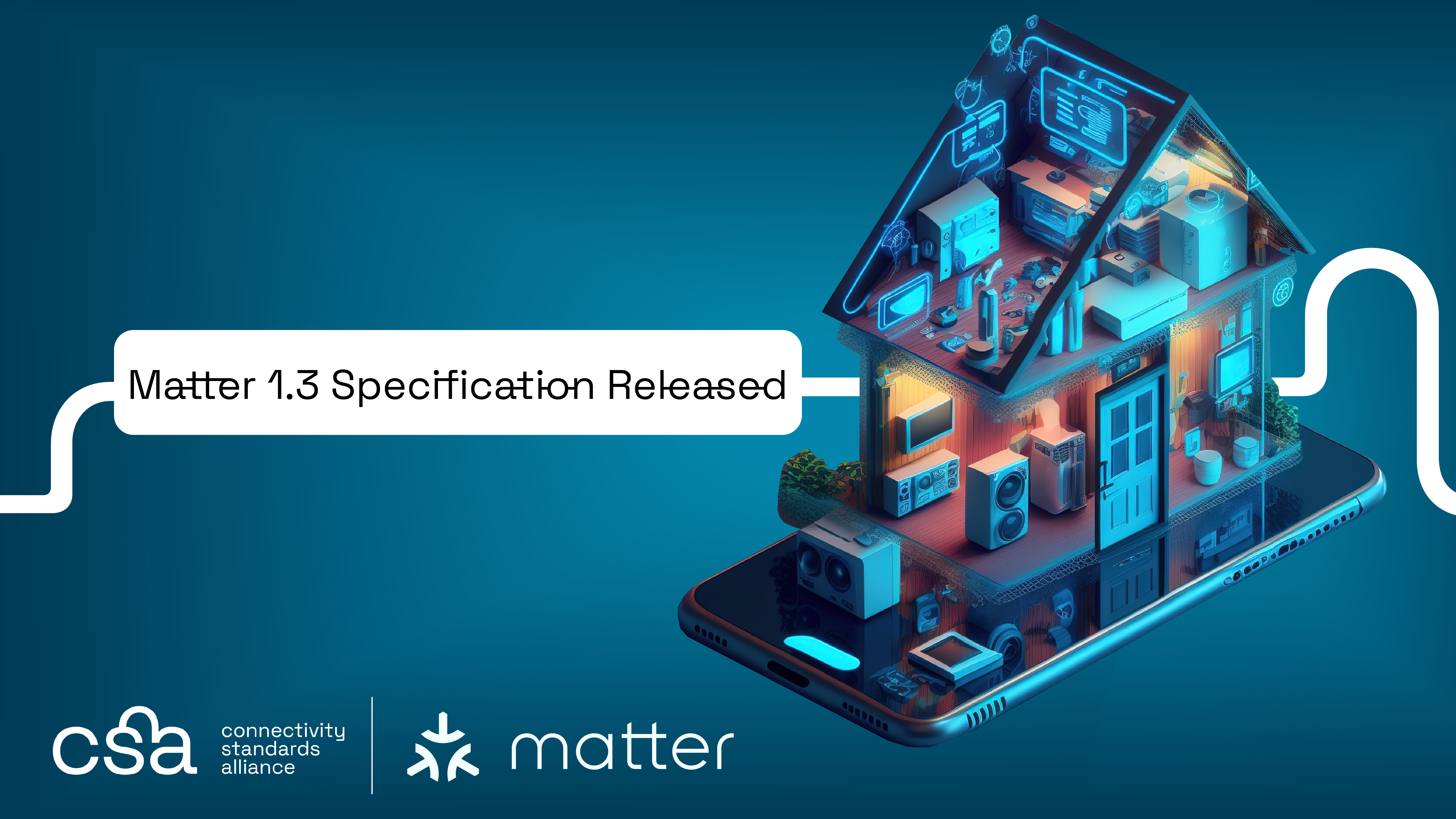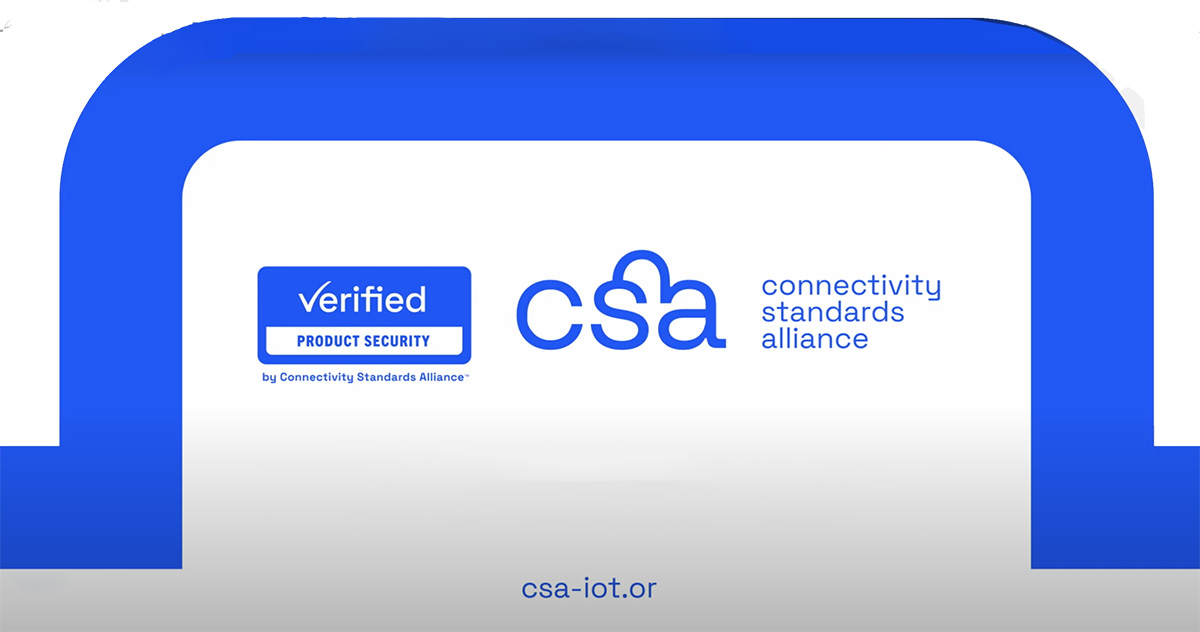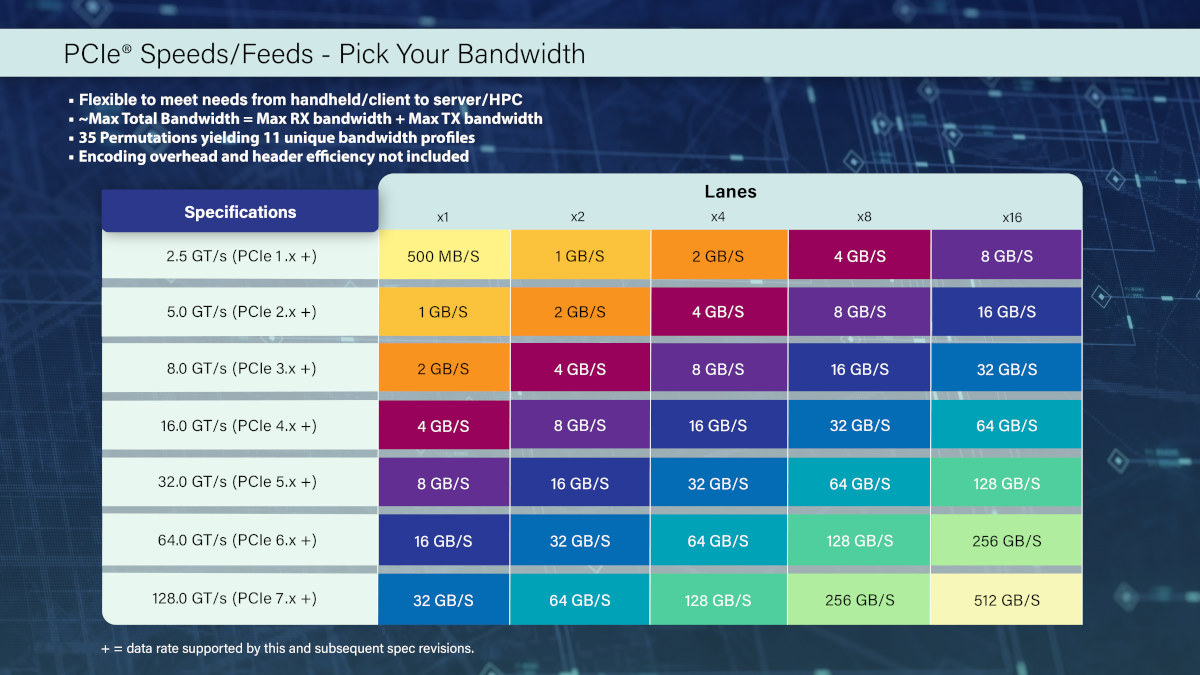The MIPI Alliance has recently released the MIPI C-PHY v3.0 specification, defining the physical layer for connecting cameras and displays. The main change in MIPI C-PHY Version 3.0 is the addition of an 18-Wirestate mode encoding option – instead of the 6-Wirestate mode encoding used in previous versions – that increases the maximum performance of a C-PHY lane by approximately 30 to 35 percent. The MIPI Alliance claims this enhancement delivers up to 75 Gbps over a short channel for ultra-high-resolution image sensors. The table below shows the key features and differences between versions of the MIPI C-PHY specification. Interestingly, the symbol rate decreased for MIPI C-PHY v3.0 compared to v2.1 (7.0 Gsps vs 8.0 Gsps for short channel), but the data rate increased from 18.3 to 24.9 Gbps, a 36% increase, due to the more efficient encoding option 32b9s that transports 32 bits over nine symbols (3.56 bits per symbol) while maintaining […]
Bluetooth 6.1 specification introduces randomized RPA updates for enhanced privacy and power efficiency
The Bluetooth Special Interest Group (SIG) has just adopted the Bluetooth 6.1 Core Specification with the addition of the randomized Resolvable Private Address (RPA) Updates feature and several errata. The Randomized RPA updates feature is designed to enhance privacy and power efficiency in Bluetooth devices by randomizing the timing of address changes to make it much more difficult for third parties to track or correlate device activity over time, and offloading the address change operation to the Controller to help the Bluetooth device extend its battery life. That’s about all there is for Bluetooth 6.1, except some errata like “Pause Encryption should be mandatory to support with encryption”. You’ll find the latest specification on the Bluetooth website, as well as a page specific to Randomized RPA Updates. None of the usual silicon vendors like Silicon Labs, Nordic Semi, or NXP have announced any updates to Bluetooth 6.1. One of the […]
GPMI is a Chinese alternative to HDMI and DisplayPort with up to 192 Gbps bandwidth, 480W Power Delivery
Defined by the Shenzhen 8K UHD Video Industry Cooperation Alliance (SUCA), GPMI (General Purpose Media Interface) is an alternative to HDMI and DisplayPort supporting up to 192 Gbps bandwidth and 480W power delivery (PD). As far as I know, the specifications have not been made public just yet, but ITHome.com shared some photos and details. The GPMI standard defines two types of connectors: Type-B and Type-C (USB-C) with support for 192 Gbps/480W PD and 96 Gbps/240W PD, respectively. Here’s how GPMI compares to the latest HDMI and DP versions. The best resource I’ve found about the GPMI standard is a white paper shared by Hisilicon. It requires email registration, and it’s only in Chinese, but I’ve translated some of the slides for reference. The Type-B port looks like a compressed HDMI port, which might be great for laptops and tablets, while the Type-C port appears to be identical to a […]
Bluetooth 6.0 features accurate two-way ranging using Channel Sounding, latency reduction, improved scanning efficiency, and more
The Bluetooth Special Interest Group (SIG) has just announced the release of the Bluetooth 6.0 Core Specification with features and feature enhancements that include Bluetooth Channel Sounding for two-way ranging between BLE devices, decision-based advertising filtering and monitoring advertisers to improve device scanning efficiency, an enhancement to the Isochronous Adaptation Layer (ISOAL) for lower latency and higher reliability, the LL extended feature set, and a frame space update for throughput optimization. Bluetooth 5.4 was released as a minor update mostly adding electronic shelf label (ESL) support in February 2023, or about 18 months ago, but Bluetooth 6.0 is a major update with the most notable feature being Bluetooth Channel Sounding to enable two-way ranging between two Bluetooth LE devices. It’s not the first time we’ve heard about “Bluetooth Channel Sounding” for distance measurements as it was implemented in WiFi 7/6 and Bluetooth 5.4 chipsets such as Synaptics SYN4382 and Broadcom […]
SMARC 2.2 specification adds support for Soundwire, PCIe Gen4, and more
SGET (Standardization Groups for Embedded Technologies) has announced the release of the SMARC 2.2 specification with various improvements including support for Soundwire, PCIe Gen4, and severa; other changes related to pinout definitions and signal descriptions, as well as various bug fixes and corrections. SMARC (“Smart Mobility ARChitecture”) is one of the many standards for systems-on-module designed to enable interoperability between vendors that offer modules compliant with the standard. SMARC features a 314-pin MXM 3.0 connector and is available in two form factors, either 82×50 mm or 82×80 mm, with the former being more common. SMARC 2.2 changes since SMARC 2.1 (April 2020): Removed wrong AC coupling comment in section 3.5.1 HDMI (SMARC 2.1.1 update) Added Soundwire as an alternative function for I2S2 Added SERDES reset signal as an alternative function of PCIe reset signal Added SERDES interrupt signals as dual-function on GPIO[7:8] Updated supported Ethernet speed and renamed the LINK […]
Matter 1.3 specification adds support for water and energy management, electric vehicle chargers, and various household appliances
The Connectivity Standard Alliance (CSA) has just announced the release of the Matter 1.3 specification and SDK with energy reporting, support for water and energy management devices, electric vehicle chargers, several new “major appliances”, namely various kitchen appliances and laundry dryers, and various other features. As a reminder the Matter protocol was initially introduced several years ago under the name Project CHIP to improve the interoperability of Smart Home devices from various vendors, so for example, users could connect a Matter-compatible Philips Hue light bulb to a Samsung gateway, or a white-brand Matter sensor with Google Home, etc… Matter started to pick last year with several products launched, and Paisit notably reviewed the MINI Extreme Wi-Fi Smart Switch (MINIR4M), the first Matter device from SONOFF, last October. Matter 1.3 adds various new capabilities and devices. Matter 1.3 highlights: Support for Water and Energy Management Devices Energy Management – Matter 1.3 […]
The New IoT Device Security Specification 1.0 unifies various standards into one
The Connectivity Standards Alliance has recently introduced its IoT Device Security Specification 1.0, a way to defragment many security standards into one. This common scheme and certification standard will ensure that devices meet local requirements in each country. With this approach, a single test from the alliance ensures that the product can be sold globally without any compliance issues. IoT Device Security Specification 1.0 at a glance: Unified Security Standard – Integrates the major cybersecurity baselines from the United States, Singapore, and Europe into one comprehensive framework. Product Security Verified Mark – A new certification mark that indicates compliance with the IoT Device Security Specification, designed to enhance consumer trust and product marketability. No Hardcoded Default Passwords – Ensures all IoT devices utilize unique authentication credentials out of the box, improving initial security. Unique Identity for Each Device – Assigns a distinct identity to every device, crucial for traceability and secure […]
PCIe 7.0 to support up to 512GB/s bidirectional transfer rates
The PCI-SIG first unveiled the PCIe Express (PCIe) 7.0 specification at US DevCon in June 2022 with claims of bidirectional data rates of up to 512GB/s in x16 configuration, and the standard is now getting closer to the full release in 2025 with the release of the specification version 0.5. PCIe 7.0 increases data transfer speeds to 128 GT/s per pin doubling the 64 GT/s of PCIe 6.0 and quadrupling the 32 GT/s of PCIe 5.0, delivering up to 256 GB/s in each direction in x16 configuration, excluding encoding overhead. In other words, the total maximum bandwidth of a PCIe 7.0 x1 interface (32GB/s) would be equivalent to PCIe Gen3 x16 or PCIe Gen4 x8 as shown in the table below. PCIe 7.0 highlights: 128 GT/s raw bit rate and up to 512 GB/s bidirectionally via x16 configuration PAM4 (Pulse Amplitude Modulation with 4 levels) signaling Doubles the bus frequency […]


